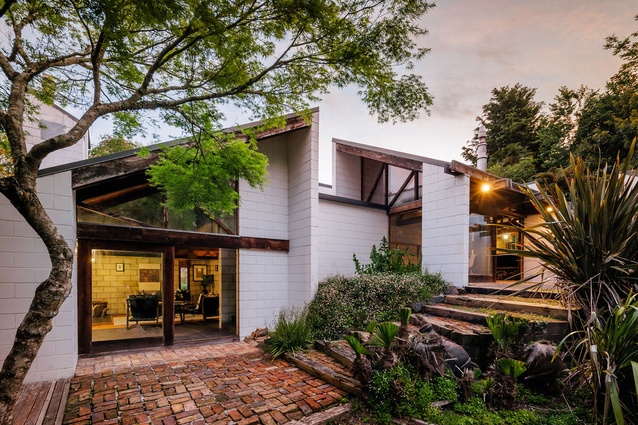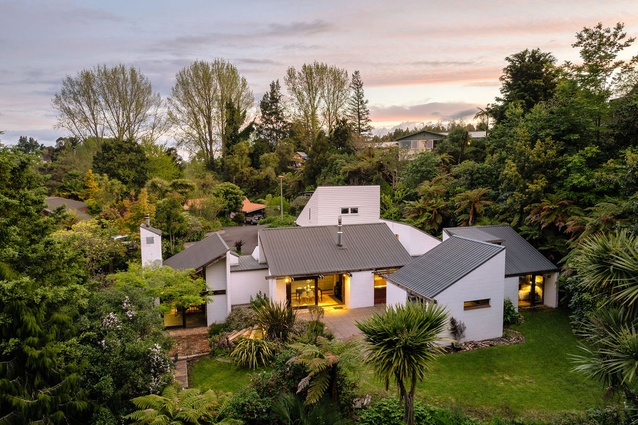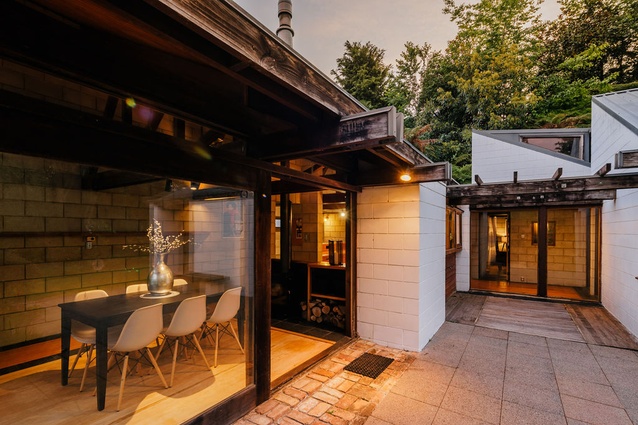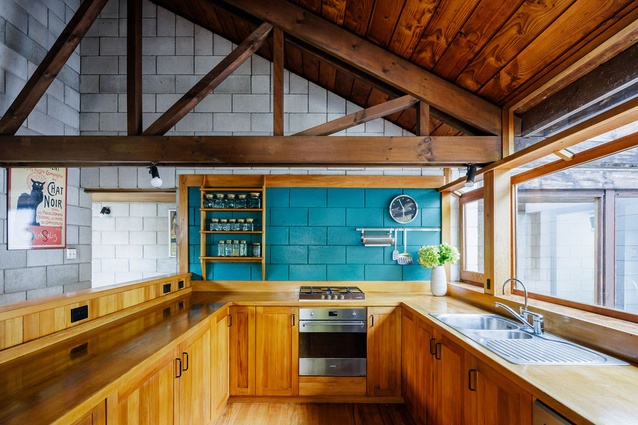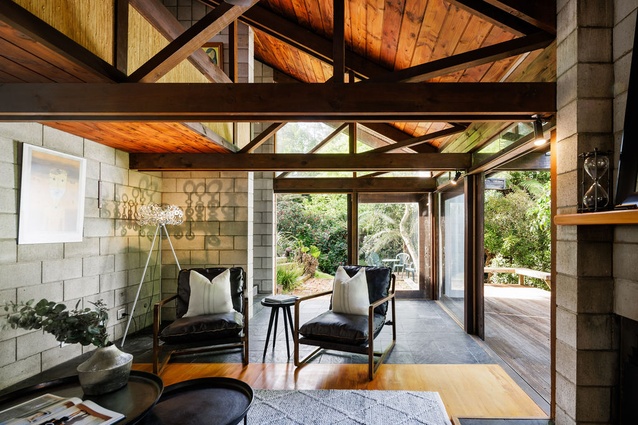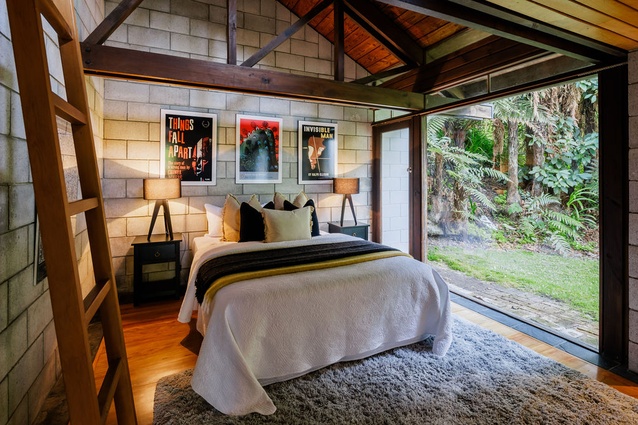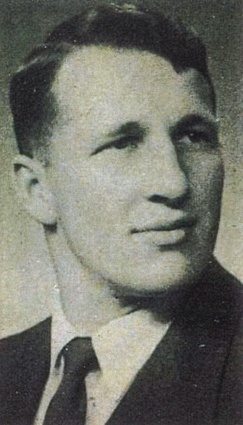Discovering Noel D’Arcy Blackburn
Hamilton-based architect Matt Grant recently came across a house in Hillcrest designed by Noel Blackburn and found a well-crafted, warm and welcoming home. Here, he delves deeper into Blackburn’s work, an architect who flew largely under the radar during his years of practice.
Open Homes offer potential buyers the chance to see buildings first-hand prior to their financial commitment. For others, including myself, it can provide the opportunity to view the work of master architects. The NZIA’s Bulletin emailed to members every Friday includes a Real Estate Report which showcases some of the finest works by architects in this country. A recent listing of a Vladimir Cacala house in St Heliers would, for me, be worth the return drive from Hamilton to Auckland just for the half-hour viewing.
An open home recently in my own suburb of Hillcrest was an anticipated event. It was by all accounts an attractive mid-century dwelling, described in the listing as a contemporary home of ‘bold character’ and ‘high end design’. The listing agent, Anya Bliss of Lugtons, informed me the architect was Noel D’Arcy Blackburn, and he designed it for his family. I pride myself on local knowledge but was completely in the dark as to who Blackburn was. Judging from the home, he was a skilled architect.

At first glance, the soaring roof forms, concrete block construction and age of the house suggested the work of local architects I knew well, such as Rod Smith or Dick Mercer. However, the compartmentalised spatial arrangements, multiple levels, expressed roof trusses, and interior linings proved otherwise. While Dick Mercer would often have concrete block unpainted in interior spaces, he would not express the roof trusses the way Blackburn has. Mercer preferred shallow-pitched roofs, and sarked ceilings with exposed rafters. Rod Smith would hide all roof structure behind plywood lining. Smith would line walls, too, in plywood.
The Blackburn home has a generous sized kitchen (not typical for Smith houses), and an L-shaped floor plan, with the centre facing a courtyard that looks north towards a gully. It has quirks, such as a mezzanine loft in one of the three bedrooms accessed only by ladder, and another loft in the living space. Each loft has just enough room for a desk, and perhaps a bookcase as well. External walls are generously glazed from floor to ceiling. After viewing the house and falling in love with the unique spaces, I was determined to find out more about the architect.
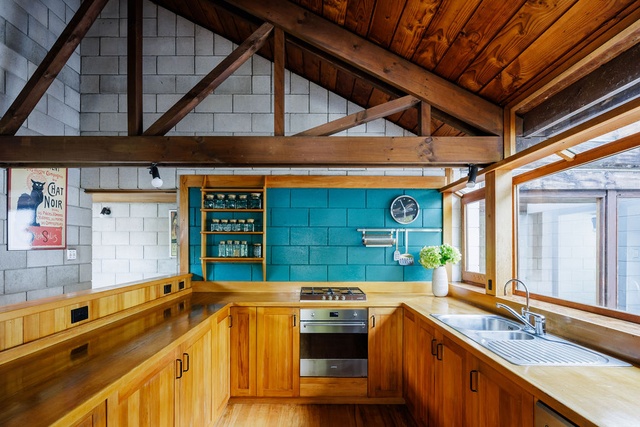
Unfortunately, the property file held by Hamilton City Council does not hold any architectural drawings. This is common for buildings of this age, however, two records in the file proved to be useful. The first is an as-built plan of the sanitary sewer lines, which confirm the owner’s name (ND Blackburn) but also provided an approximate completion date. This helped narrow down the search for the building permit, which was issued on the 2nd of March 1970. The permit records the dwelling’s builder as ‘self’, which suggests the house was both designed and built by Blackburn.
The second record on file is a plan for a new garage, dated 1976. The plan is prepared by Hamilton firm Gillman Garry Clapp and Sayers (GGC&S) and could be a clue as to who Blackburn worked for. GGC&S were a commercial firm in Hamilton that designed large-scale dairy and hospital projects. They designed the Te Rapa Milk Powder Factory (1968) in Hamilton, which, when it opened, was the largest factory of its kind in the world.

A search in David Sayer’s book The Goodwill Years, written about the firm GGC&S, lists Blackburn as an Associate of the company in 1978/9, and again in 1981. Other Associates recorded were Chien Chow, who in 1992 would establish Chow:Hill Architects with Richard Hill in Hamilton, and are still practicing today. Chow recalls that Blackburn had a keen interest in healthcare projects, and although they did not work together on any projects, Chow remembers that Blackburn was helpful and always willimg to assist and mentor him.
The property’s Certificate of Title records that Blackburn and his wife purchased the vacant site in 1969, built their house in 1970, and then subdivided the site in 1977 into what it is today. In 1977 the house was sold. This ties in with Blackburn’s career journey.
GGC&S were becoming increasingly busy with projects outside of the Waikato. In 1978, GGC&S were appointed as architects for the new Braemar Hospital in Nelson. By now Blackburn had relocated from Hamilton to Nelson permanently in order to manage this and other projects in the region. It would be interesting to see if Blackburn designed another family home in Nelson.
David Sayers retired from GGC&S in 1984; the last remining partner. In January 1985, the firm became Gillman Partners and, six months later, the firm was sold to Worley Consultants Ltd, an engineering firm who would soon establish an architectural branch.
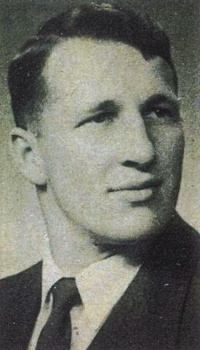
The last record I can find of Blackburn’s career is a 1992 professional notice listing him as resident architect of Worley Architects Ltd in Nelson. Blackburn remained with the company after the amalgamation with Worley Consultants Ltd.
Blackburn’s qualification is interesting; he had a Diploma of Architecture from Birmingham University and was registered with the RIBA. Blackburn grew up in Gisborne, and was engaged in 1957 to Murial Hedley, of County Durham, England. He was the only child of Mr and Mrs D’Arcy Blackburn (Noel’s father D’Arcy was a well-known horticulturist and co-founder in 1950 of the New Zealand Iris Society).
It would seem that after his wedding, Blackburn and his wife lived in England, where he studied architecture before they returned to New Zealand to start a family. It is possible Blackburn was attracted to the office of GGC&S during a recruitment drive Sayers undertook in England in 1966. This was due to increased workload and a lack of local architects available for employment.
Skilled architects, while working for large companies, can become relatively anonymous. GGC&S carried out very little residential work. Sayer’s writes in his book that they were so busy with hospital work, with the Tauranga and Waikato Hospital Boards, that they were turning away at least 50% of other general commercial, ecclesiastical, and residential work. There were exceptions, fortunately.
David Sayers family home in Hamilton (NZIA Enduring Award 2011) was published in Bonny and Reynolds Living with 50 Architects, a New Zealand Perspective (1980) and partner Barry Morris designed St Stephen’s Church (1972, NZIA Enduring Award 2016) in Tamahere.

It is a pity Blackburn did not design more houses, at least that I’m aware of, or became better known as a residential architect. His family home in Hillcrest is a well-crafted, warm, and welcoming home. I am envious of the new owners, and hope that they appreciate its original condition as much as previous owners have.
Imagery supplied and used with permission from Aaron Radford.

